
Wild Life
“It’s everywhere, if you’re quiet enough to notice.”
We’re learning to live more gently here—sharing space with the creatures who were here long before us. The more time we spend in the garden, the more we notice: the lizard doing its proud little head bob on a sun-warmed rock, the crows chasing a hawk across the sky, the squirrel perched high above the canyon, chirping out warnings I once mistook for birdsong. Even on heavy days, something always pulls me back—a hummingbird zipping past my face, a butterfly landing right where I’m working. These moments don’t just interrupt my day—they anchor me in it. This page is a quiet thank you to the wild ones who remind us, again and again, to be present, to pay attention, and to respect the home we all share.
-

Blue Scrub Jay
California Scrub-Jays are some of the brainiest birds in the backyard. This one was spotted gathering coconut coir to line its nest—a perfect material for keeping eggs safe and warm. Known for caching food and mimicking calls, these jays are full of surprises if you take the time to watch.
-

Coopers Hawk
Cooper’s Hawks are built for speed and surprise. With long tails and short, rounded wings, they navigate through trees like missiles to snatch smaller birds mid-flight. If your bird feeder suddenly goes quiet, one of these sharp-eyed hunters might be watching from the shadows.
-

Western Kingbird
Western Kingbirds may look mellow, but don’t be fooled—these bold birds will dive-bomb hawks to defend their nests. They're fierce insect hunters and often perch on fences or wires, scanning for their next catch. Want to spot one? Skip the bird feeder and let a few bugs hang around—Kingbirds prefer live prey
-
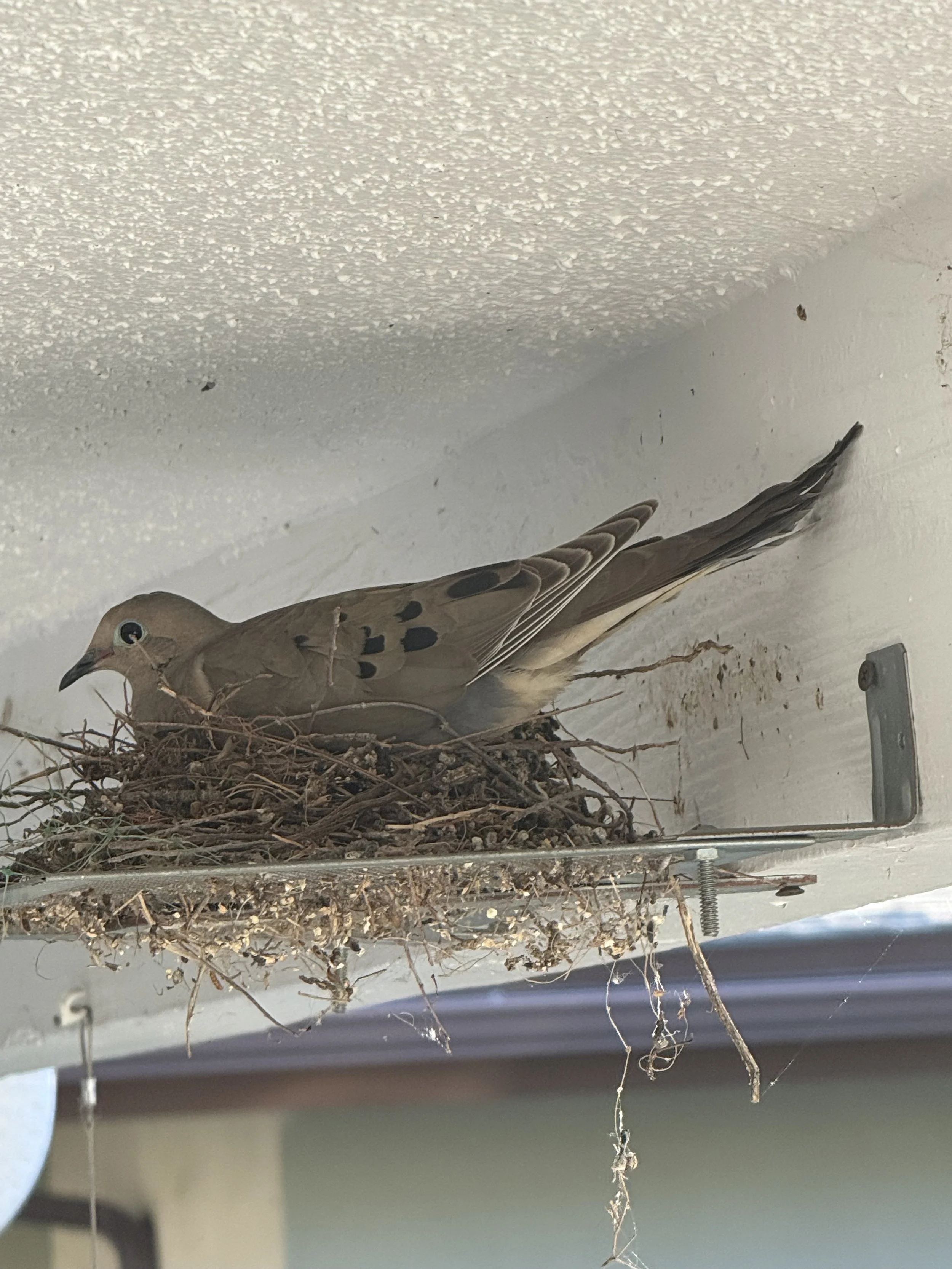
Mourning Dove
Mourning Doves are quiet nesters that often choose balconies, gutters, or flowerpots over trees. They lay just two eggs at a time—and may reuse the same spot for multiple broods in a season. Their soft cooing isn’t mourning—it’s a mating call, and one of the most recognizable bird sounds in North America
-
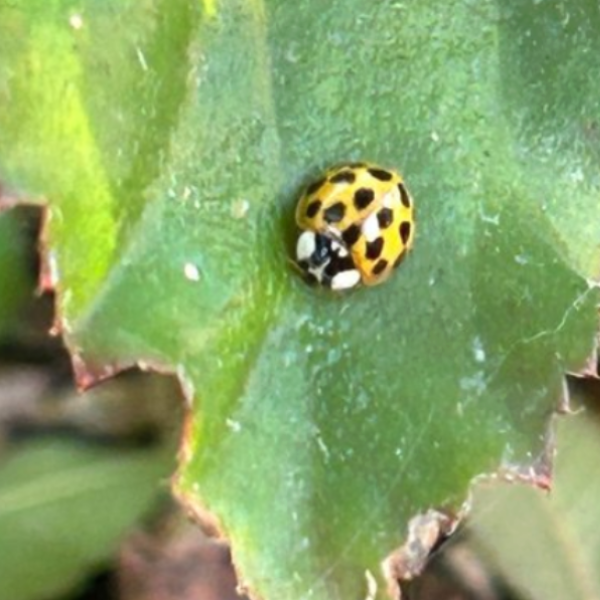
Multicolored Asian Lady Beetle
This yellow-and-black spotted beetle might look like a rare ladybug, but it’s actually a Multicolored Asian Lady Beetle—an invasive species introduced for pest control. They’re aggressive competitors that sometimes outcompete native ladybugs, and they can even bite if handled. Still, they do help control aphids in the garden.
-

House Finch
House Finches are friendly little seed-lovers that adapt well to urban life. The males usually show off a splash of red, while females (like this one) wear more muted browns. This one returns to our front porch every year to lay her eggs—sometimes more than once a season. They often build nests in hanging planters, porch lights, or cozy corners near people.
-
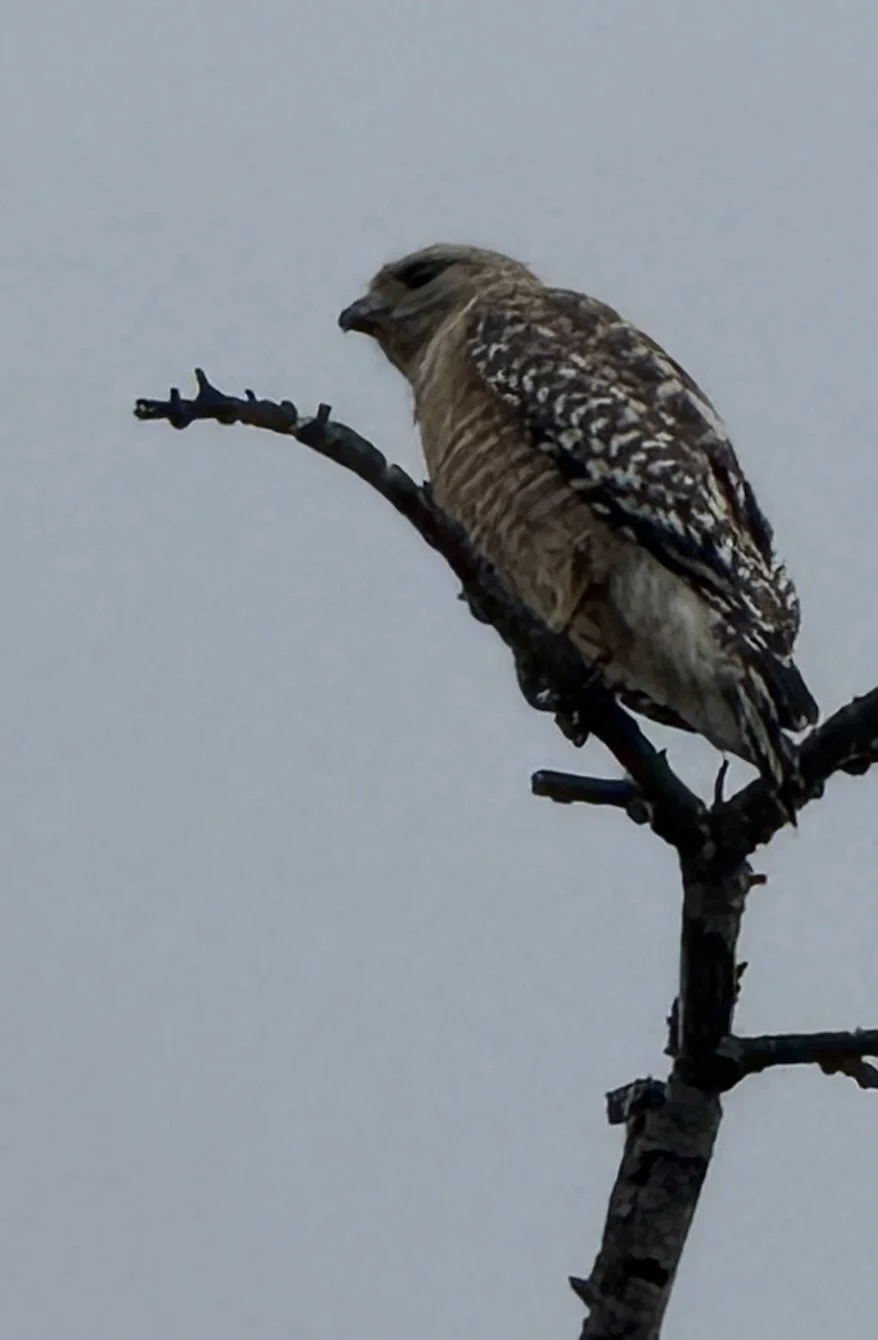
Red Winged Hawk
Red-shouldered Hawks are fierce defenders of their turf—but they don’t always go unchallenged. This one was caught mid-squabble with a much smaller bird trying to chase it off. These raptors are known to nest near humans and aren’t shy about making noise or claiming a favorite perch.
-

Cloudless Sulphur
A flash of sunshine in motion, the Cloudless Sulphur (Phoebis sennae) is known for its buttery yellow wings and graceful, darting flight. Often seen fluttering near senna plants or sipping nectar from hibiscus and lantana, it’s a frequent visitor in warm, open gardens. These butterflies migrate long distances and can sometimes be spotted in large groups during late summer. One of the easiest butterflies to spot—and one of the hardest to catch!
-
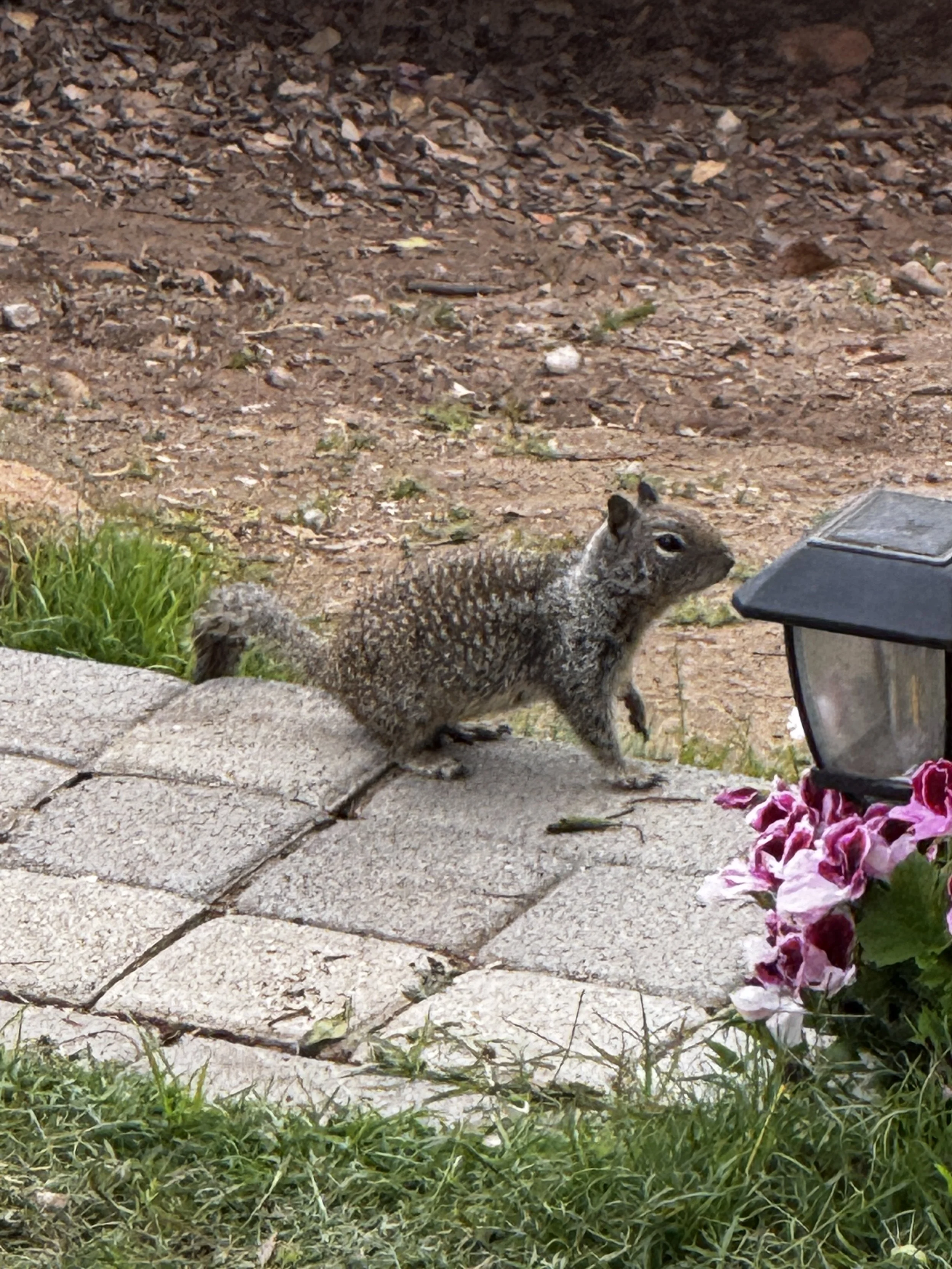
California Ground Squirrel
California Ground Squirrels are clever foragers that quickly learn where the food drops. This one made daily rounds to our front patio to clean up under the bird feeder. They live in burrows, not trees, and will stand upright to scout for danger—or check if the humans are watching.
-

Mourning Dove
This is one half of a devoted Mourning Dove pair—the other is quietly sitting on their nest nearby. Doves often share parenting duties, with one guarding while the other incubates the eggs. They’re known for returning to the same nesting spot year after year, especially when they’ve found a safe, quiet place like a porch or balcony.
-
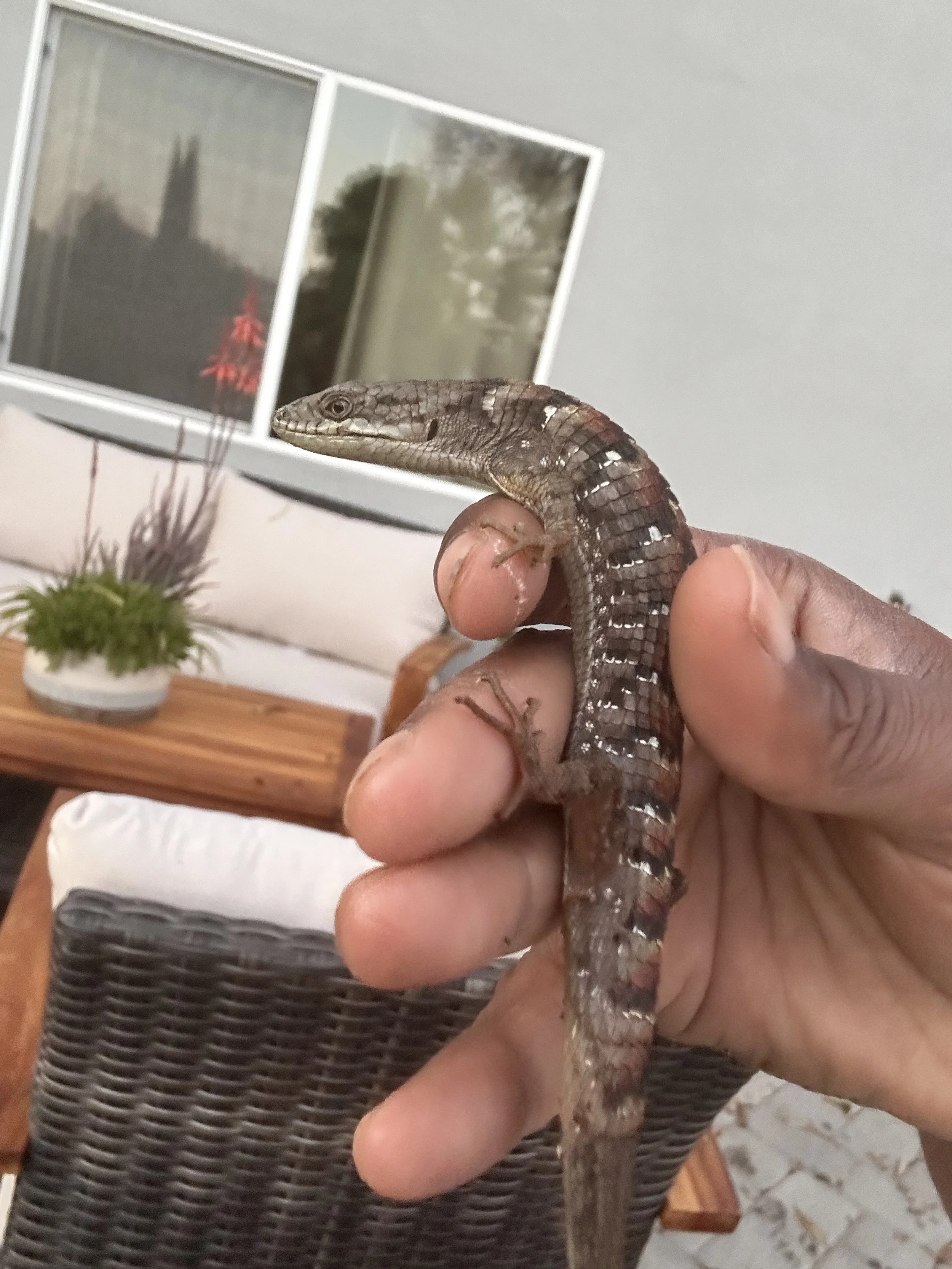
Southern Alligator Lizard
This tough-looking reptile is a Southern Alligator Lizard—a regular in our yard and surprisingly bold. With its long, flexible body and powerful bite, it’s often mistaken for a small snake at first glance. These lizards are excellent pest controllers, feeding on slugs, beetles, and even small rodents. They’re feisty, fascinating, and part of our backyard ecosystem whether we’re ready or not.
-

Monarch Butterfly
Monarchs are iconic—but their numbers have plummeted by over 80% due to habitat loss, pesticides, and climate change. While planting milkweed can help, it’s important to choose native varieties. Tropical milkweed, often sold in stores, can linger year-round and spread a harmful parasite (OE) that weakens Monarchs. Stick with native species like Asclepias fascicularis or Asclepias speciosa in California.
-
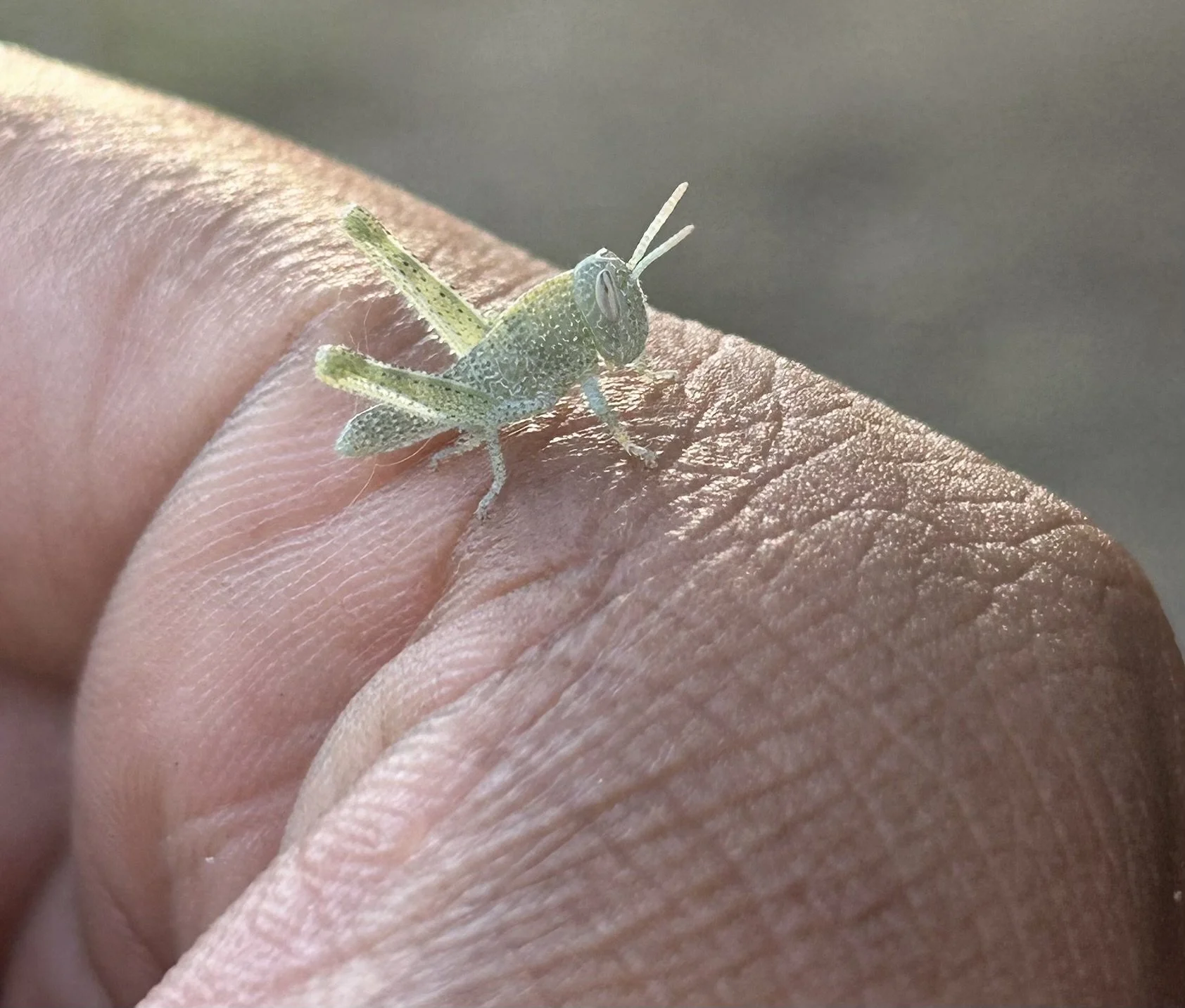
Grasshopper Nymph
This tiny visitor is a grasshopper nymph—basically the baby version of the bigger jumpers you’ll see later in the season. At this stage, they can’t fly, but they’re already active eaters. Their numbers boom in warm weather and can tell you a lot about how your local ecosystem is shifting.
-
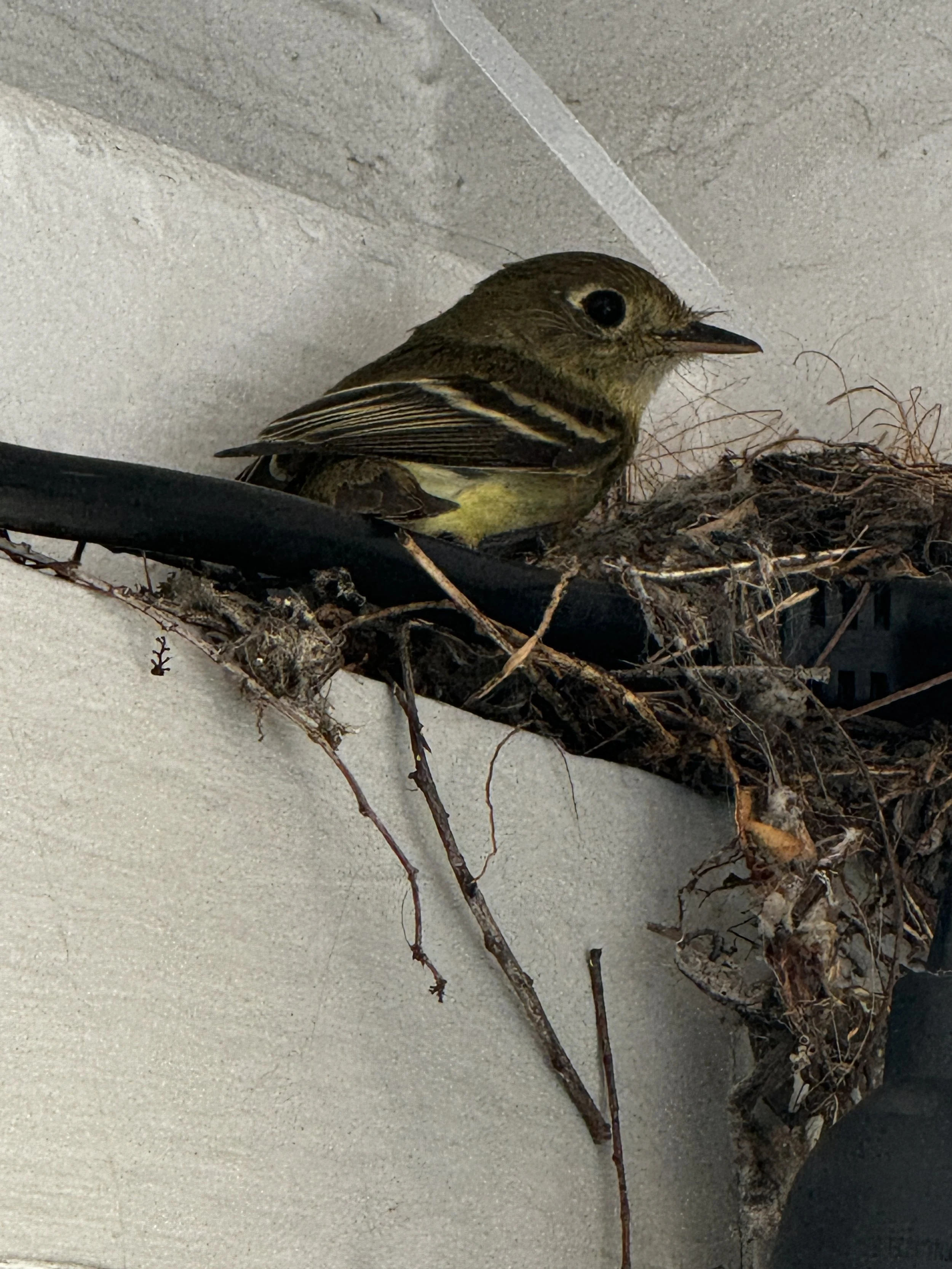
Pacific-Slope Flycatcher
Pacific-slope Flycatchers are secretive nesters that love quiet corners—like this cozy spot under our roofline. They feed mainly on flying insects and are often heard before they’re seen, with a sharp “seet!” or rising “tsip” call. Their nests are a messy mix of moss, grass, and fur, often built in sheltered nooks around homes and cabins.
-
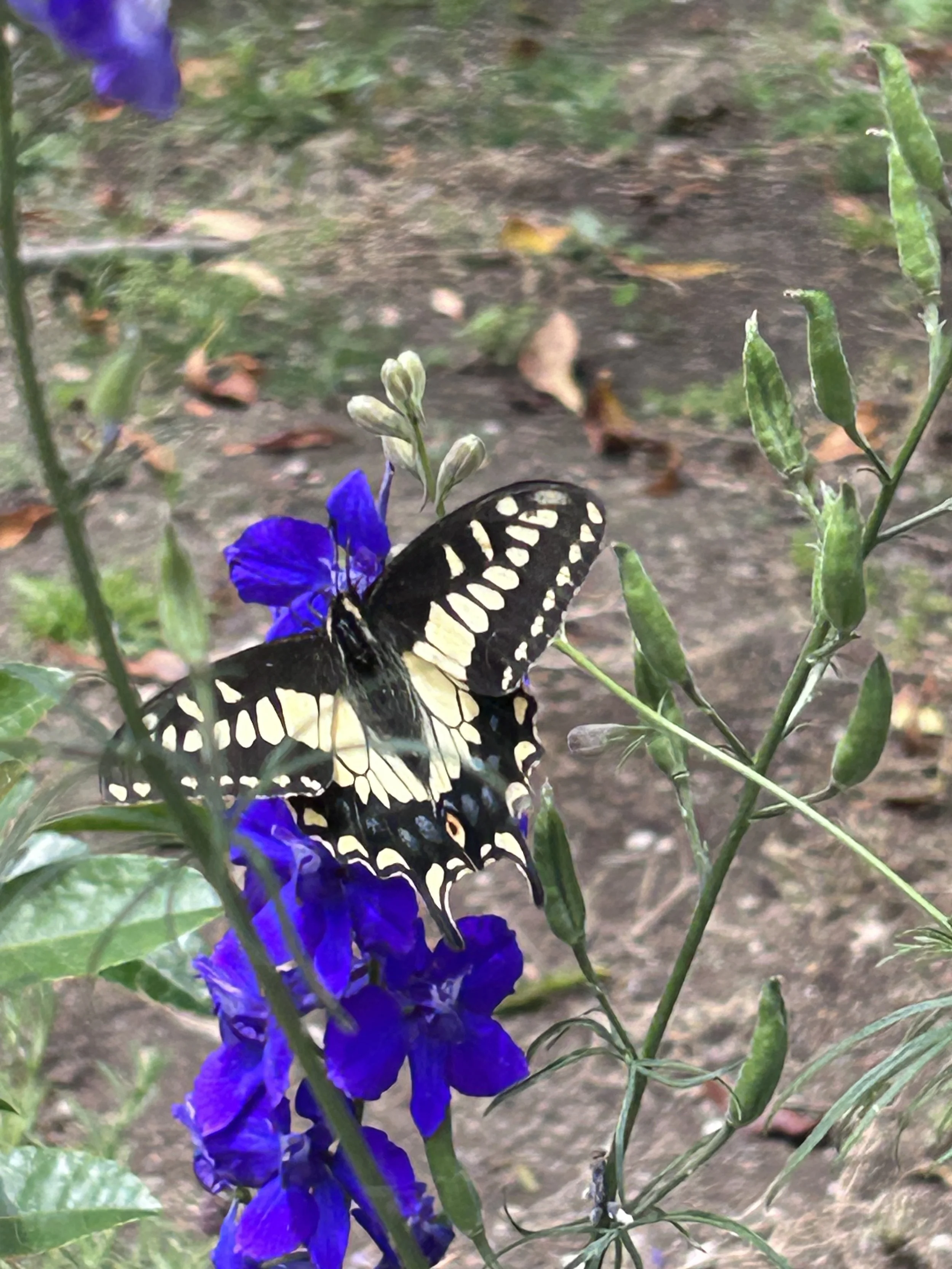
Giant Swallowtail
Giant Swallowtails aren’t just big—they’re surprisingly nimble for their size. This one was spotted feeding on larkspur, a favorite nectar stop. Their caterpillars (nicknamed “orange dogs”) may snack on citrus, but the adults play a vital role in pollination. If you have citrus trees, you’ve likely hosted more than you know.
-
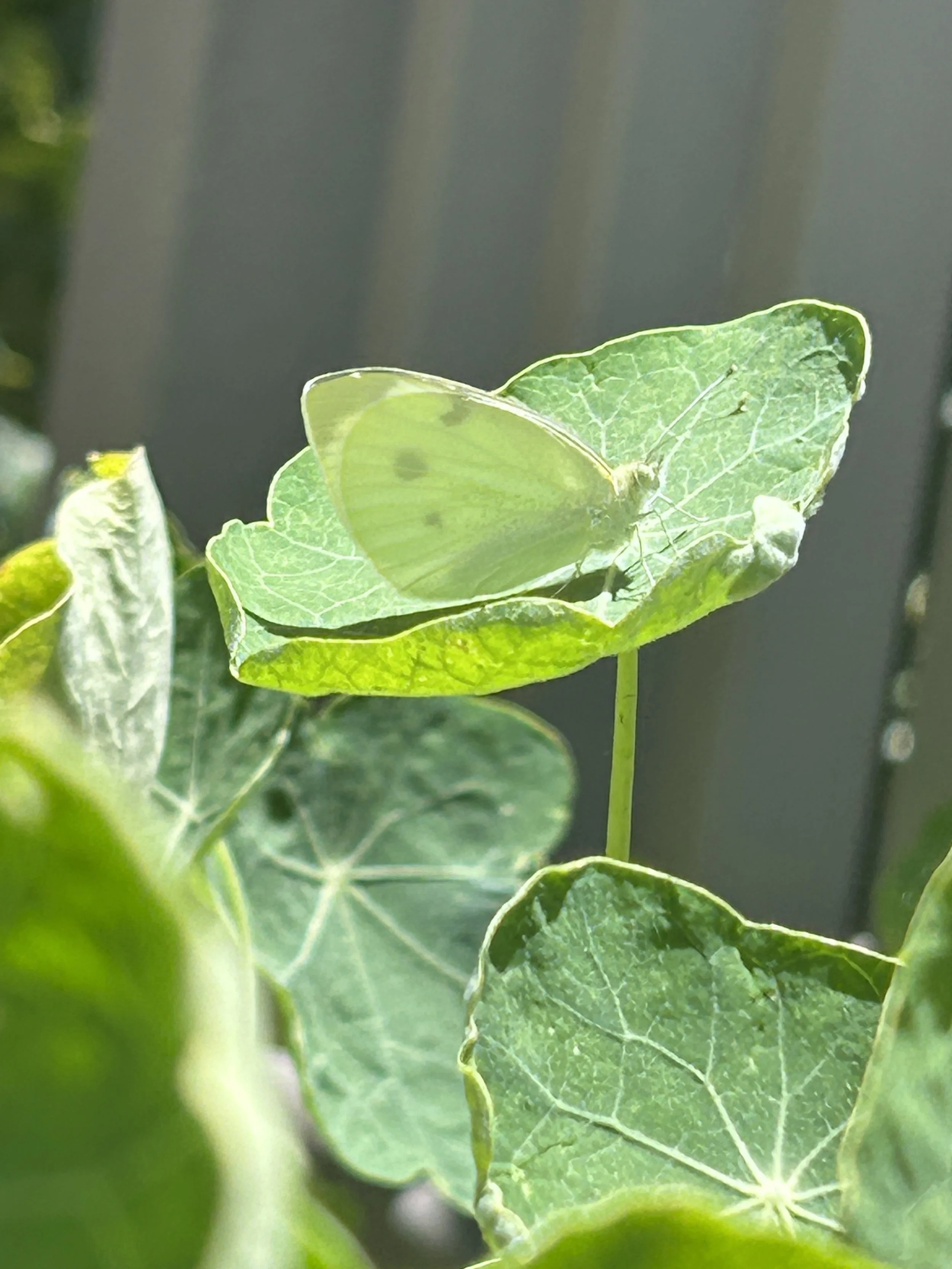
Cabbage White Butterfly
The Cabbage White Butterfly may look delicate, but it’s one of the most widespread garden insects around. While the adults sip nectar, their caterpillars are known for chewing through leafy crops like kale, broccoli, and nasturtiums—like the one it’s perched on here.
-
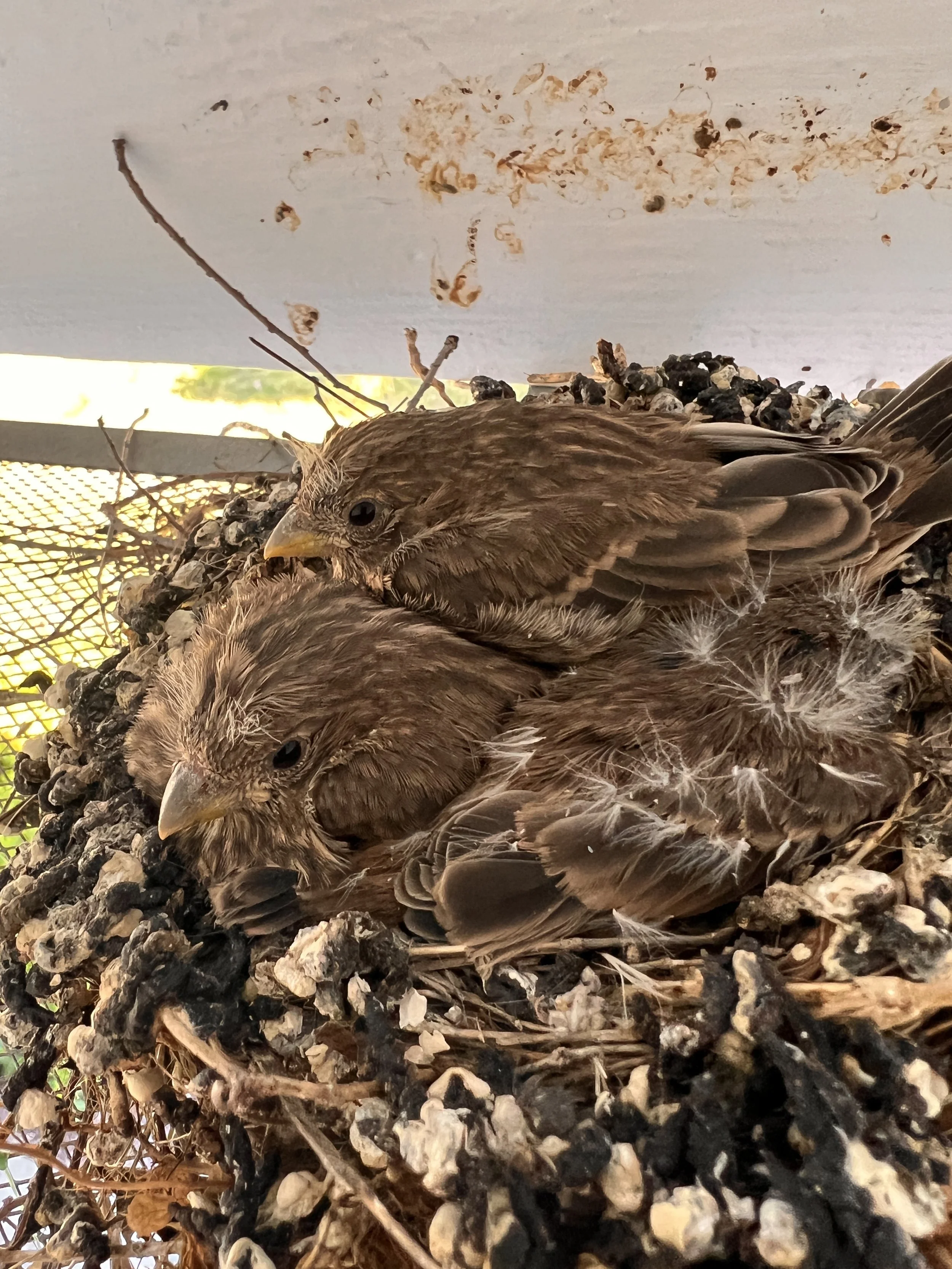
House Finch Fledglings
These fuzzy little fledglings are House Finch babies, hatched right on our front porch. They grow fast—within just two weeks, they’re ready to leave the nest and start exploring. Their parents keep them well-fed with seeds, fruit, and the occasional bug, even after they’ve flown off.
-

Mourning Cloak
The Mourning Cloak may look somber, but it’s one of the most resilient butterflies around. It overwinters as an adult, often hiding in tree bark or sheds, and can live up to 10 months—a rare feat for butterflies. Instead of flowers, it prefers tree sap, rotting fruit, and even dung. If you spot one, you're seeing a true survivor of the insect world.
-

American Crow
We see them everywhere in San Diego, but crows are no ordinary backyard bird. They're among the smartest animals on the planet—often compared to a 7-year-old child in problem-solving and memory. Crows recognize faces, use tools, and even pass knowledge down through generations. If you take the time to notice them, don’t be surprised if they’re already one step ahead of you.
-
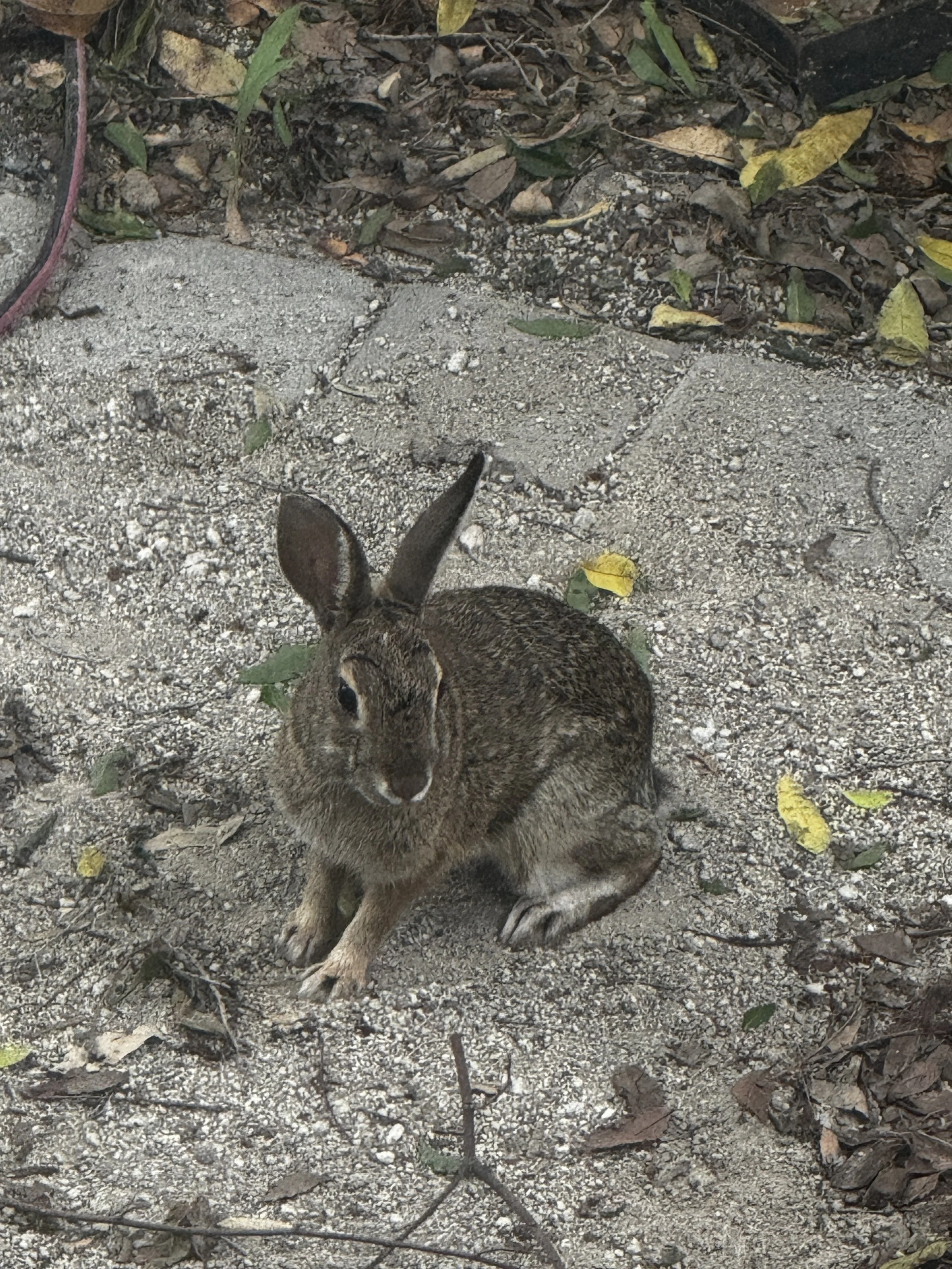
Dessert Cottontail
These aren’t just visitors—they’re regular residents. The desert cottontail has made itself right at home in our garden, especially in the evenings when the lawn turns into a buffet. With their large ears, soft brown-gray coats, and signature white tails, they may look sweet—but they’re part of the unofficial garden demolition crew.
-
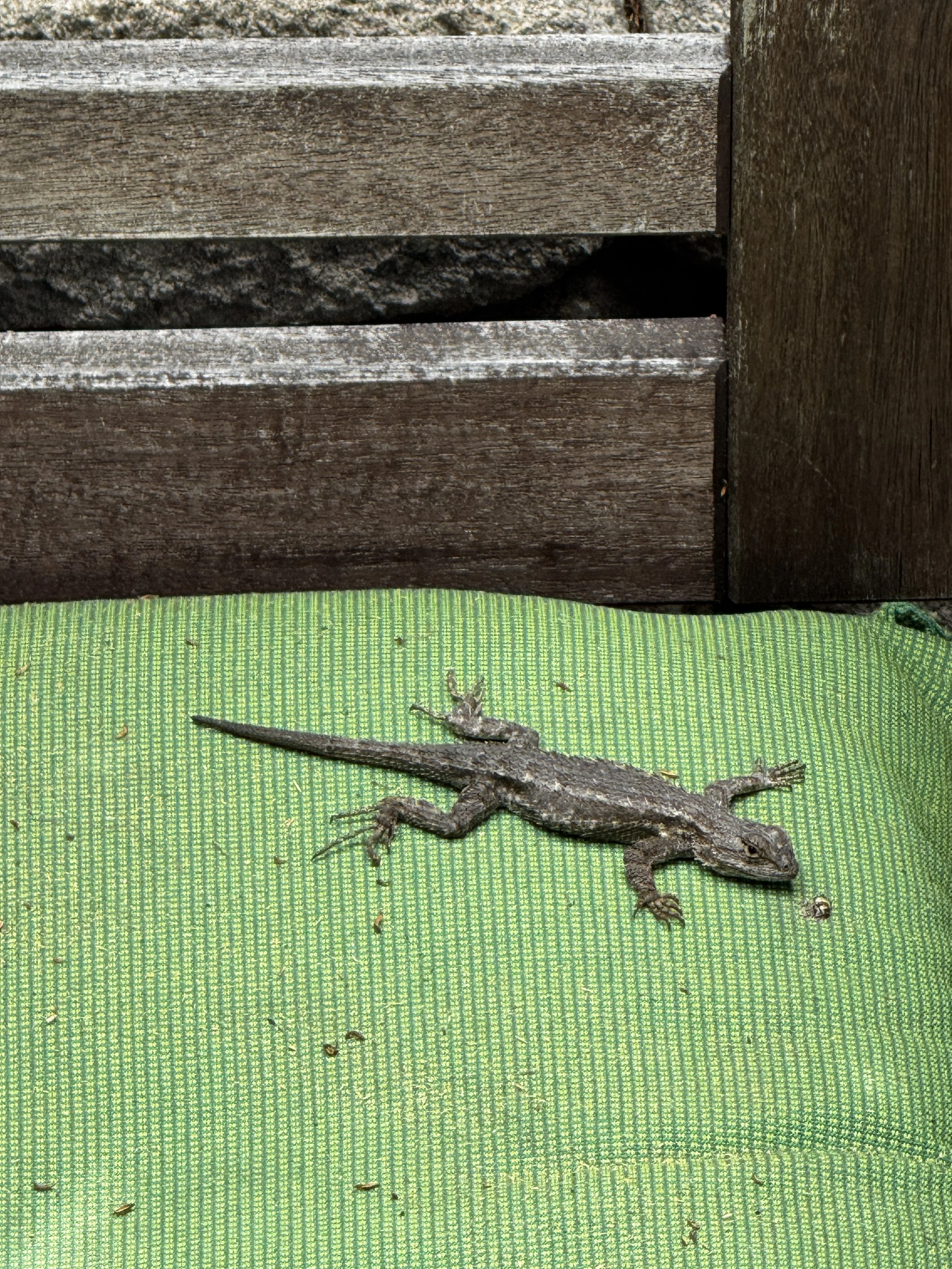
Western Fence Lizard
This rugged little local is a Western Fence Lizard, often seen soaking up sun on rocks, fences, and—apparently—our patio furniture. Aside from their tough look and quick moves, they’re garden heroes: they eat ants, beetles, and mosquitoes. Bonus? Their presence helps reduce the risk of Lyme disease by killing infected ticks. They're scrappy, useful, and always watching.
-
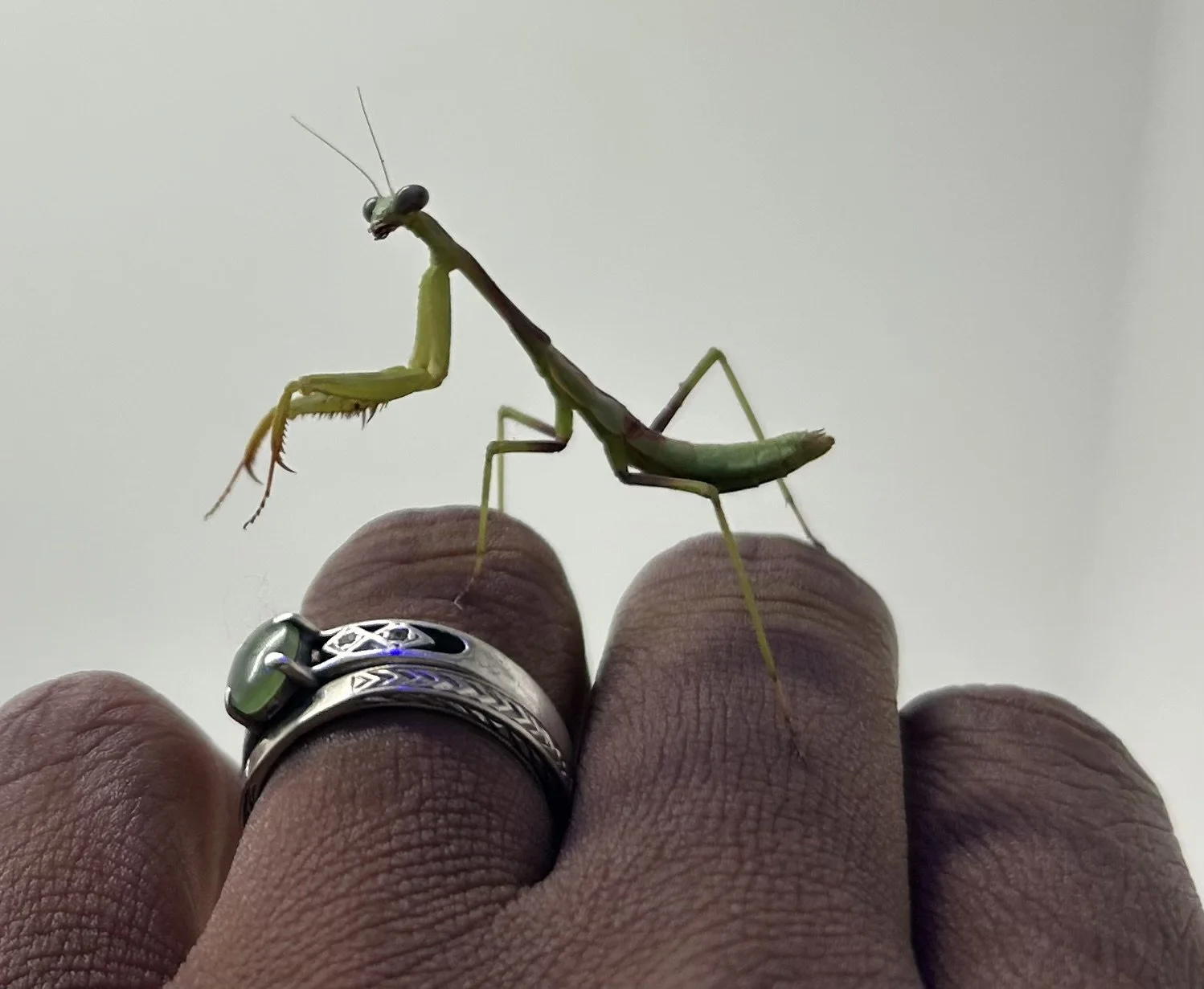
Praying Mantis
This tiny predator might look delicate, but don’t be fooled—mantises are master hunters. With keen vision and lightning-fast reflexes, they help keep garden pests in check. This one is still young, but it already carries the grace (and attitude) of a full-grown guardian. We love spotting them—it means the garden’s doing something right.
-

Katydid Nymph
This delicate-looking critter is a young katydid—part of the same family as crickets and grasshoppers. Still in its wingless stage, it spends its days hopping between leaves and petals, feeding lightly and blending in with its surroundings. Its long antennae and tiny frame make it easy to miss—unless you're paying close attention to the flowers, of course.
-

Western Whiptail
Fast, sleek, and always on the move, the Western Whiptail zips through our garden with bold stripes and a tail built for speed. We usually spot the babies first—bright blue tails flashing before they dart out of sight. They snack on bugs, drop their tails to escape danger, and in some species, don’t even need males to reproduce. Nature’s wild like that.
-

Gulf Fritillary
This weathered Gulf Fritillary lives a life rooted in devotion—its entire journey, from egg to caterpillar to flame-orange wings, depends solely on the passionflower vine. Common in Southern California, these butterflies lay their eggs exclusively on passionfruit leaves, never straying far from the plant that sustains them. I found this one inside the netted cover of our passionfruit tree. Even after gently guiding it out, it kept returning—drawn back to the vine like it couldn’t bear to leave.
-

Mourning Dove (Juvenile)
Mourning doves grow fast and fledge quietly. With soft brown feathers and dark, watchful eyes, they blend into the landscape until the moment they’re gone. This young dove spent its final morning perched in a hanging planter, steady and still, just hours before its first flight. A gentle presence—soon to be a ghost in the garden.
-

June Bug
After two and a half weeks of trying, I finally got this shot. June bugs are in full mating season—buzzing loudly, shaking leaves, and zipping through the garden like clumsy helicopters.
Males take flight at dusk, searching for females, and their loud, erratic buzzing gives the whole yard a low, restless hum. They can be a bit destructive in the grub stage, but their metallic shells are surprisingly beautiful up close.
This one was burrowed in the dirt—likely scouting a spot to lay eggs—then flew off right after.
-

Yellow-headed Blackbird
With its saffron-yellow head and ink-black body, the Yellow-headed Blackbird looks like it flew in from a different kind of painting. Though usually found in wetlands, this one showed up quietly in our canyon garden—no song, no fuss. A few days earlier, I saw what looked like two of them looping around each other at full speed, too fast to catch clearly. This time, one finally paused long enough for a proper look. The feathers were just too striking.
-
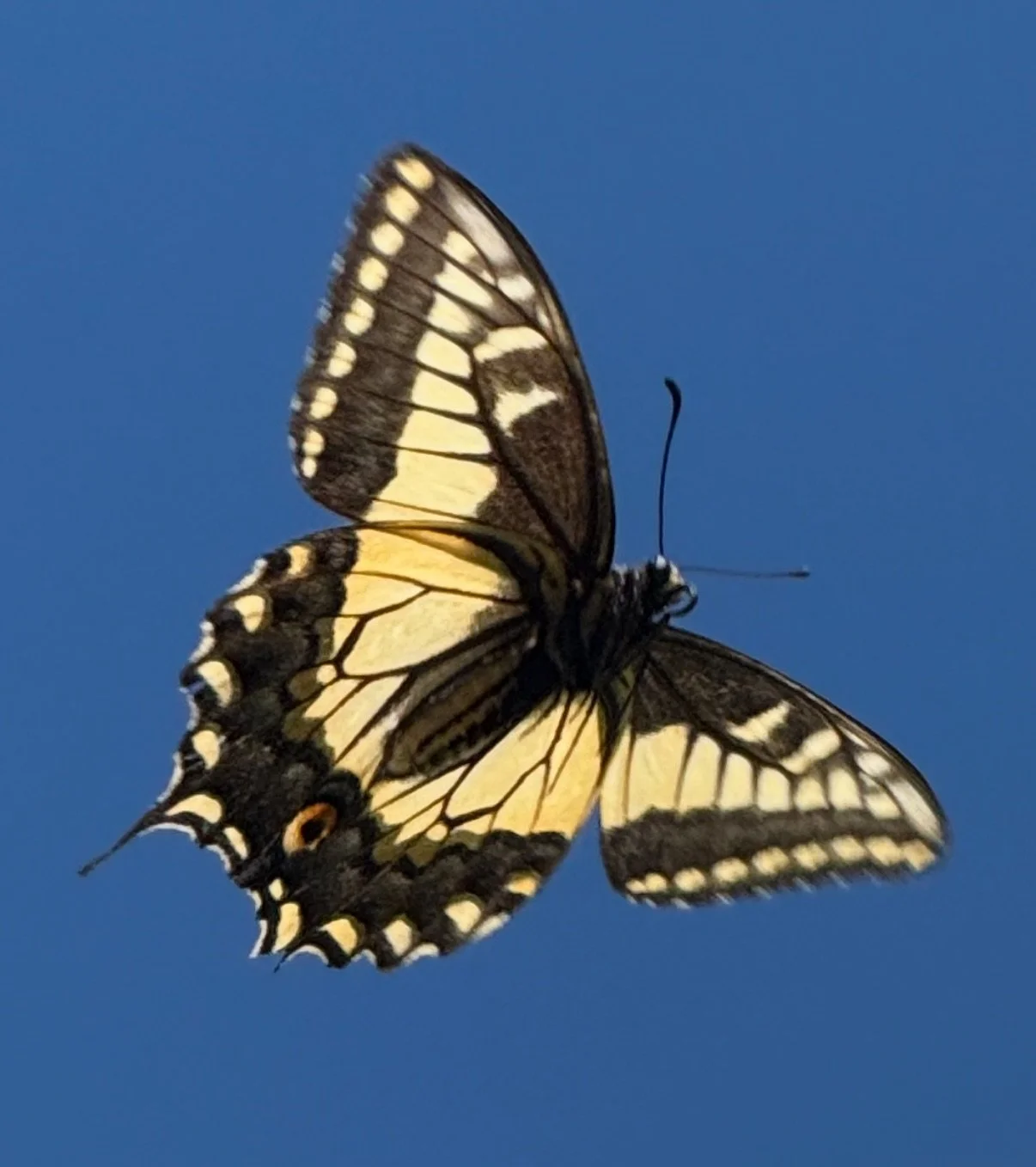
Western Tiger Swallowtail
One of the largest and most recognizable butterflies in the western U.S., the Western Tiger Swallowtail is drawn to citrus, sycamores, and willows—trees with plenty of space to glide between. This one zipped through the tangelo tree in our yard, darting through the leaves while I tried to keep up with my camera. They rarely stay still for long, but this one looped low enough to catch. With pale yellow wings edged in black and a pair of small orange eyespots near the tail, it looked like something sketched in a hurry and brought to life.